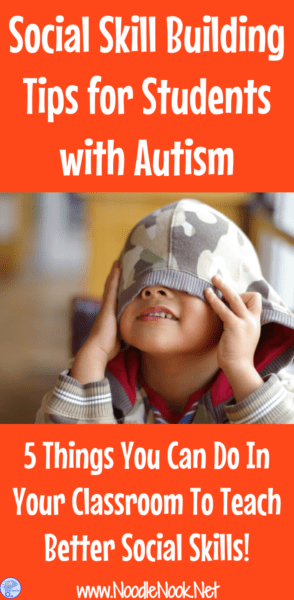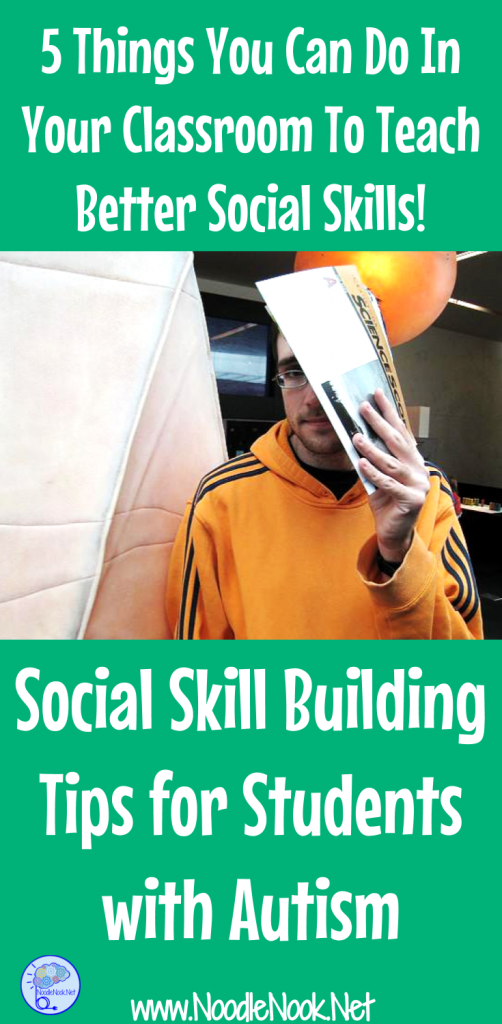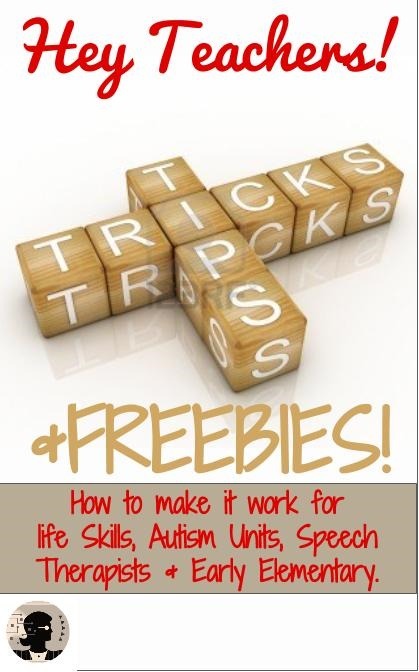Social Skill Building Tips for Students with Autism
You take your students out on a Community Based Trip and they… well, they stick out. You work in the classroom all the time to get your students to interact in socially appropriate ways, but it’s just not sticking when you get out in public. What can you do?
I hear this all the time from teachers:
“My kiddos do a great job with me, but are a little awkward with other people. What can I do? They’re with ME all the time!”
I get this question quite often… We want our students to be able to look normal when they are talking to people?
[dt_gap height=”10″ /]
Even if a student has good social skills with you, you get them to the grocery store or out in the cafeteria and they are not interacting, not making eye contact, and they looks socially wrong.
Now, “normal” and “wrong” are said with love, but it’s hard to chat with a friend, co-workers, or anyone if you don’t follow social cues. That becomes infinitely more challenging if you don’t even know what the cues are. If our special needs kids are going to look the part when they are out in public, interacting with their own friends, or working at a job, there are some basic skills that make a big difference!
As a teacher in the classroom, I have seen special needs and even general ed students struggle with some basic social skills. They could be delayed because of cultural differences, home life, disabilities, or a myriad of things. Bottom line, though, is that every kid in school today needs these soft skills to be successful in the post-secondary.
[dt_gap height=”10″ /]
With that said, here are 5 ways to up the social interactions in the classroom. Though designed for special needs, these tips can easily be used in General Ed too.
1. Cooperative Learning
Cooperative Learning is a way of teaching in the classroom that constantly requires students to interact and share what they are learning as well as collaborate on tasks. In a typical classroom, it is possible for an entire 50-minute class period to go by where a student never communicates with a peer. Day after day without interacting leads to a deficit in an important soft skill. That’s where Cooperative Learning makes a huge difference.
One of my favorite strategies is to have students read their writing prompts to each other every day- Rally Robin style. Then we work on asking at least one on topic question. It looks like a train wreck the first three months of school, but by the second semester my kiddos are rocking it. Check out the strategies listed on this Cooperative Learning website to learn more. If you have the opportunity to attend a Kagan Cooperative Learning class, their strategies are fabulous in the classroom! Otherwise, check out the books available on Cooperative Learning. And, remember, everyone in class should have a way to participate. You better believe we have VODs out and programmed Big Macks as well as Core Boards and AAC. We want everyone to have a mode of communication and lots of Choice and Voice!
2. Non-Verbal Posters & Cues
There are some basics to looking the part when interacting with others- you have to have good eye contact, smile and nod throughout the conversation, and listen so you know when to talk. Those rules work for everyone (believe me, sometimes I forget to listen as I make my to-do list in my head… then I’m totally lost)!
Now, some people seem to know hot to communicate non-verbally intrinsically, but others have to have it taught.
I have loved seeing the change in my students when I link the nonverbal poster with physical cues because they react when they are talking and I don’t have to stop them to tell them what to do… and the truth is, they look so much more “normal”. People interact with them differently and it is so much better. Check out the printable posters for $.25 (yup, a quarter). The printable includes suggestions for IEP goals as well as a data sheet.
[tweetthis]5 Things YOU can do to build social skills in your Autism Unit![/tweetthis]
3. Real Life Practice
This may seem like a no-brainer, but you have to practice these soft skills with people other than you. And you have to practice a lot. I have my students do a social interaction with me everyday when they come in the classroom.
They can’t come in without talking to me.
Everyday.
I greet them and ask them some basic chit-chat questions (like: How are you? or What did you do this weekend? or Did you see _____ on TV last night?) I also give them pointers at the end or, if necessary for some, have a para help by prompting students with statements they can use.
Wait time is essential to this. So is starting off with the same question every day for awhile… just so a student can anticipate what you are going to say and get some good practice. Equally as important is generalizing the skill. Me everyday is fabulous, but someone not-me is necessary so the student can apply the skills we practice with new people. It makes it more like real-life situations.
4. Scripted Interactions
Visuals are a great way to remind students what comes next. It is also great for kids with Autism who are Echolalic (echo what others say).
Need more on Echolalia? Read this!
I have used this social interaction template with several students to get them to talk to me (and to anyone they may meet) in a socially appropriate manner as a starter to developing social skills. Download this FREE pre-filled bubbles and start using them today. I’ve worked with several Echolalic students and used this tool… they have learned the script and generalize it- now they at least get through the initial part of social interactions in a fairly ‘normal’ way. If you are looking on a way to use this strategy during academic, read the Sentence Stem post to learn more!
5. Practical Social Communication Boards
Lots of students with disabilities have the mental skills needed to socially interact, but lack the verbal skills to make it happen. Several electronic AAC devices exist that can bridge that gap, but there is a learning curve for that, some students struggle with them, and others have not developed the pre-requisite skills needed to use them effectively.
Fortunately there are plenty of Communication Boards available for FREE out there. And never forget the value of teaching core communication to students. Using a Core Board and Core Vocabulary will help with communication.
For students who are verbal and communicative, use social stories to teach them the social skills they need. Stories that come with a comprehension piece or a ‘right’ and ‘wrong’ sort will help to solidify the rules of social interactions. Check out the some social stories here.
No matter what method you use to get your students interacting, you MUST get them interacting… with each other… often. Start today!
Teach On, Rock Star!!





